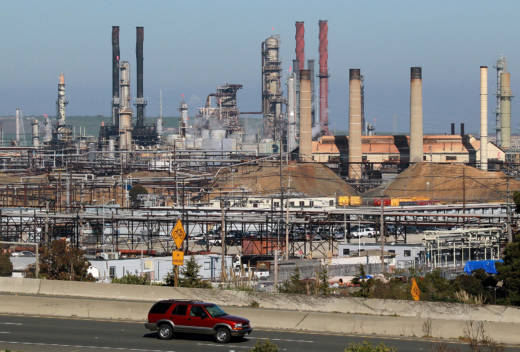Chevron's report to the state said that "non-critical workers" were evacuated and that on-site emergency medical personnel were called to assist workers. The company said the incident may have led to the release of at least 500 pounds of sulfur dioxide, a pollutant that can cause respiratory problems.
Refinery officials told local air regulators the plant had problems with hydrocarbons entering a sulfur recovery unit, according to Bay Area Air Quality Management District spokesman Ralph Borrmann.
The workers who had to leave the facility were contractors performing maintenance work, according to Randy Sawyer, Contra Costa County's chief environmental health and hazardous materials officer.
Sawyer said the contractors were doing work on the unit that malfunctioned. He said one of the workers experienced some sort of medical problem a couple hours after the initial episode and that the problem "seems to be unrelated" to the refinery incident.
Despite the fact that no refinery workers were seriously injured, California's Division of Occupational Safety and Health has launched a probe into the incident, according to agency spokesman Frank Polizzi.
The workers were employed by four different contractors: Contra Costa Electric, Harder Mechanical, BrandSafway and JT Thorpe, Polizzi said.
Bob Lilley, business development director at Contra Costa Electric, said he did not have information about the incident and it did not come up during a company meeting on Monday.
An employee who picked up the phone at Harder Mechanical said the company, due to a confidentiality agreement with Chevron, is not allowed to discuss work at the refinery.
Representatives for BrandSafway and JT Thorpe have yet to respond to requests for comment.
Two elected officials who represent the area of the refinery, Richmond Mayor Tom Butt and Contra Costa County Supervisor John Gioia, said they were not told about the incident.
"I'm surprised I was not made aware of this," Gioia said in an email Monday.
In the last two years Chevron's Richmond refinery has experienced a spike in incidents in which the facility is forced to burn off excess gases because of operating problems.
